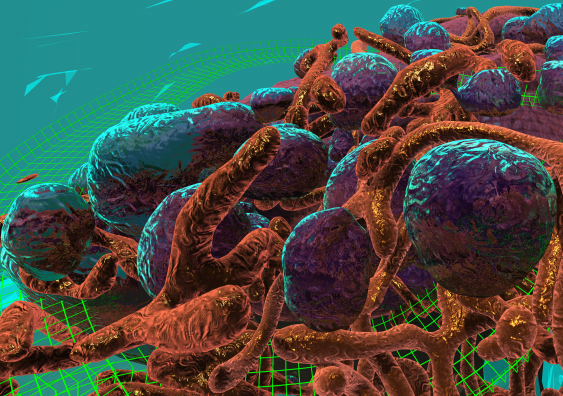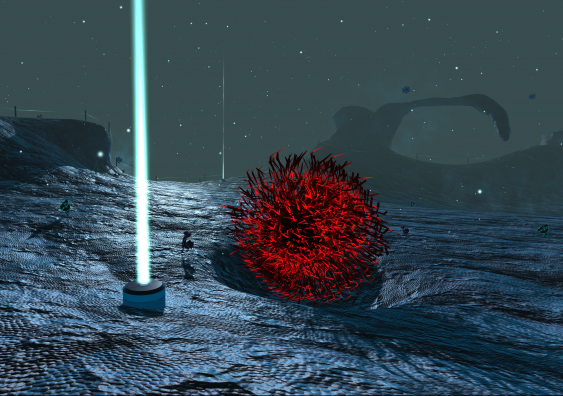Virtual reality explores drug delivery to breast cancer cells
Virtual reality is allowing scientists to walk through a breast cancer cell to observe the delivery of nanoparticle drugs, potentially speeding up the drug-design process.
Virtual reality is allowing scientists to walk through a breast cancer cell to observe the delivery of nanoparticle drugs, potentially speeding up the drug-design process.

Fran Strachan
Communications Manager Low Carbon Living CRC
+61 2 9385 5402
fran.strachan@unsw.edu.au
Virtual reality is allowing scientists to walk through a breast cancer cell to observe the delivery of nanoparticle drugs, potentially speeding up the drug-design process.
Dr John McGhee, from UNSW Art & Design, has used high-resolution electron-microscope data to reconstruct a human breast cancer cell in three-dimensional CGI.
Wearing VR headsets scientists can literally walk-through the ‘landscape’ of the cell – including the nucleus, mitochondria and endosomes – to observe how nanoparticle drugs are absorbed.
“It’s as if you have shrunk down to nano size, to the height of 40 one-billionths of a metre and you are navigating the surface of the cell,” said Dr McGhee. “You can literally walk around it and gather data.”
A collaboration with the ARC Centre of Excellence in Convergent Bio-nano Science and Technology, Journey to the Centre of the Cell aims to speed up the science discovery process by improving understanding for medical researchers, students and patients.
To see a breast cancer cell at this scale and watch the interactions and processes unfold will help us engineer drugs that can be delivered in the best possible way.
It is the first time that data from an actual cell has been used to develop an interactive virtual reality model.
“To deliver a drug successfully the cell membrane needs to be penetrated,” said Dr McGhee. “With this visualisation we can see if the drug gets past the tough cell surface, or whether the body automatically stops it. These are things that could never be observed in 2D.”
Dr McGhee said the project aimed to explore the visual language of scientific discourse by moving it away from abstraction to enhance scientists' relationships with their data.
“A lot of scientific data doesn’t record movement so we had to make that leap for the researchers through augmentation while still keeping it scientifically accurate. Being able to immerse yourself in a data set is a far more powerful experience than just observing it,” he said.

Nanoparticle (red) being absorbed by the surface of a breast cancer cell. Photo: John McGhee
Co-leader of the project, ARC Future Fellow Dr Angus Johnson from Monash University, specialises in developing better ways to deliver drugs.
“To see a breast cancer cell at this scale and watch the interactions and processes unfold will help us engineer drugs that can be delivered in the best possible way,” said Dr Johnson. “The immersive technology allows me to see things that I would never normally see.”
A former CGI animator, Dr McGhee, who is Director of UNSW’s 3D Visualisation Aesthetics Lab, said he hoped the project would have an impact on people’s lives.
“The role of the artist is not just to illustrate - it's to mediate and make a contribution to the discovery process. If this visualisation helps get a cancer drug on the market more quickly that’s a good thing.”
Journey to the Centre of the Cell will be featured on ABC Catalyst tonight.
Read the article and watch the video in The Sydney Morning Herald.